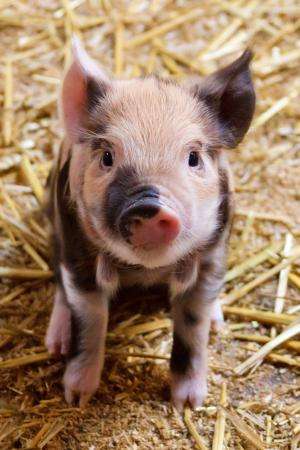Stopping the worm from turning

Almost one in six people worldwide are infected by parasitic worms, while parasitic infections of livestock cause economic losses of billions of Euro per year. Resistance to the few drugs available to treat infections is increasing and there is an urgent need to identify additional strategies to control parasitic diseases. A new study by Martina Ondrovics and colleagues at the University of Veterinary Medicine, Vienna describes a rational approach to identifying proteins that might be involved in the larval development of a particular worm that infects pigs. The results are published in the online journal PLOS ONE.
Despite the clear arguments for controlling parasitic infections, we know surprisingly little about the developmental processes in parasitic nematodes. A good model system for research is provided by Oesophagostomum dentatum, a roundworm which infects the large intestines of pigs, slowing the animals' growth and leading to significant economic losses. A number of chemicals are available to help keep the parasite in check but the worms are growing increasingly resistant to their use and so there is a substantial need for new methods of treatment.
From eggs to parasites
The worm, Oesophagostomum dentatum, has a fairly simple life cycle. Eggs appear in the faeces around 3 weeks after ingestion of third-stage larvae, the so called L3 stage larvae. In the first two developmental stages, the larvae are not infective. The third-stage larvae migrate from the faeces into the surroundings, where they can again be ingested by pigs. When the parasite reaches the large intestine, the third-stage larvae burrow into the mucosal layer of the intestinal wall and moult to fourth-stage larvae. After a further 6-17 days they emerge from the mucosa and undergo a final moult before they mature into adults and reproduce.
Drug screen on worm proteins
Together with colleagues in Australia and the USA, Martina Ondrovics in the group of Anja Joachim at the University of Veterinary Medicine, Vienna (Vetmeduni) has undertaken a detailed in vitro investigation of the proteins involved in the transition from third-stage to fourth-stage larvae. The researchers employed an integrative approach that combined in vitro drug testing with proteomic and bioinformatic analysis. Previous work had identified a number of enzymes (hydrolases) that are likely to have a role in parasite development. Ondrovics used sophisticated techniques to examine the effects of certain compounds (enzyme inhibitors) on the larval protein composition.
Searching for functionality
Four of the seven enzyme inhibitors she tested were found to inhibit the development of L3 larvae. The inhibitors also caused substantial alterations in the amounts of certain proteins in the larvae. Ondrovics found that 22 proteins were expressed at significantly different levels. Although no functions could be assigned to three of the proteins, bioinformatics analysis suggested that the remainder are involved in a wide range of biological processes, including reproduction, cellular metabolic processes, multicellular organismal growth, developmental processes, growth, locomotion, response to stimuli, localization and biological regulation. It seems that the activities of these proteins are increased at the L3 to L4 transition, so the proteins are likely to have key functions at this time.
Designing new weapons against parasites
A better understanding of key developmental processes could enable new strategies to control parasitic nematodes based on the disruption of key biological pathways. The work at the Vetmeduni thus paves the way for future research to develop drugs that act specifically against parasitic nematodes. As Ondrovics says, "We urgently need new targets for intervention: the worms are rapidly becoming resistant to all the weapons at our disposal. The proteins we identified seem to be involved in fundamental developmental processes and we hope that functional studies will show that some of them are ideal candidate targets for the design of new and selective inhibitors."
More information: Ondrovics, M. et al. Proteomic analysis of Oesophagostomum dentatum (Nematoda) during larval transition, and the effects of hydrolase inhibitors on development, PLoS One. www.plosone.org/article/info%3Adoi%2F10.1371%2Fjournal.pone.0063955
Journal information: PLoS ONE
Provided by University of Veterinary Medicine -- Vienna
















